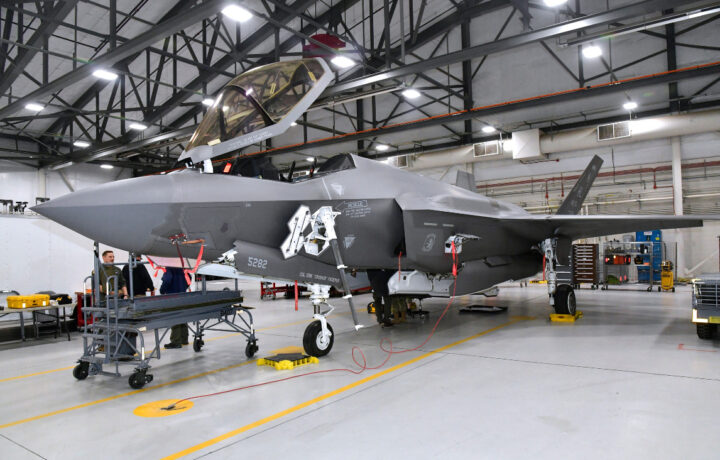The Lockheed Martin F-35 Lightning II is considered among the most capable fighter aircraft in the world today. The fifth-generation stealth aircraft is fitted with advanced sensors, and can carry its main weapons load within an internal bay to reduce its radar signature. However, until recently it wasn’t able to collect flight data.
Earlier this year, the first set of United States Air Force operational aircraft were equipped with the Quick Reaction Instrumentation Package (QRIP), a device roughly the size of a football that is able to record almost a terabyte of data per flight. This technology is currently being implanted within the F-35 flight, but it could expand to all fielded U.S. Air Force fighter variants as well as other platforms.
The 59th Test and Evaluation Squadron partnered with the Test Resource Management Center to leverage advances in technology and invent QRIP.
It would enable the first Combat Air Forces contribution to Crowd-Sourced Flight Data (CSFD), which has required devices that have been historically too large, cumbersome or expensive to consider operation aircraft integration. The QRIP will enable the F-35 – and in the future other fighters – to collect data for test and evaluation purposes. By applying this technology to CAF aircraft could significantly boosts the amount of CSFD available to developers within minutes versus the traditional weeks or months to access the data.
According to the Air Force, the QRIP informs operational data sets while improving mission data reprogramming, data products and software development. This enables the collection of crowd-sourcing data from thousands of jets that were previously flying unmonitored, which could further enable the Air Force could then have the capability to deliver a constant stream of data to a central repository.
“QRIP captures data that is currently not being recorded, or being discarded at the cutting room floor, and makes it available and accessible at the speed of relevance,” explained Lt. Col. Nathan Malafa, 59th Test and Evaluation Squadron commander. “Big data analytics, machine learning, and artificial intelligence do the heavy lifting to sift through this data and highlight where action needs to be taken.”
To date, 19 CAF jets have already been modified with QRIP to date, with several taking part in exercises outside of the continental United States. The CSFD gathered thus far has accelerated reprogramming changes, highlighted software deficiencies, enabled rapid debriefs, and provided data products that were previously unavailable to pilots and intelligence officers.
“This is the power of edge-node computing, and we’ve now demonstrated it to great effect by watching video from OCONUS sorties minutes after the data is ingested over 6,000 miles away,” Malafa continued. “The implications of this are only limited by our imagination.”
The more data that can be collected from the Air Force’s diverse portfolio puts the crowd in CSFD, while it further amplifies data sets that can be used to gain competitive advantage against America’s adversaries and competitors.
“While there is always some data collection from any modern aircraft, most of the data that instruments are collecting, which could be collected, is lost,” technology analyst Rob Enderle of the Enderle Group told ClearanceJobs.
This data could also help the United States Air Force as it looks ahead to future aircraft, both manned and unmanned.
“This information would be critical to better understanding flight dynamics, particularly under combat conditions to better understand what is going on and create a far improved next-generation aircraft,” said Enderle. “The use of QRIP will now allow a massive increase in data collection. It should result in a competitive edge against governments that don’t have similar technology and governments that don’t engage in combat – actual or training – as often as we do. I expect several fascinating aircraft and aerodynamics breakthroughs will result from capturing and understanding these new data streams.”


